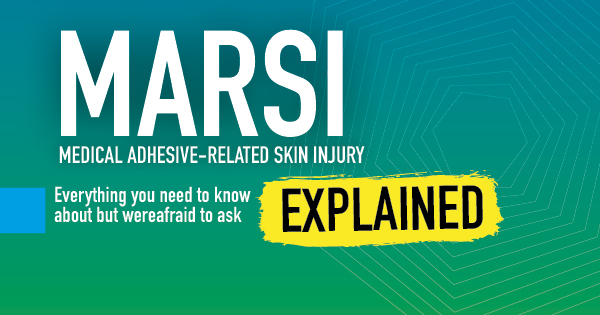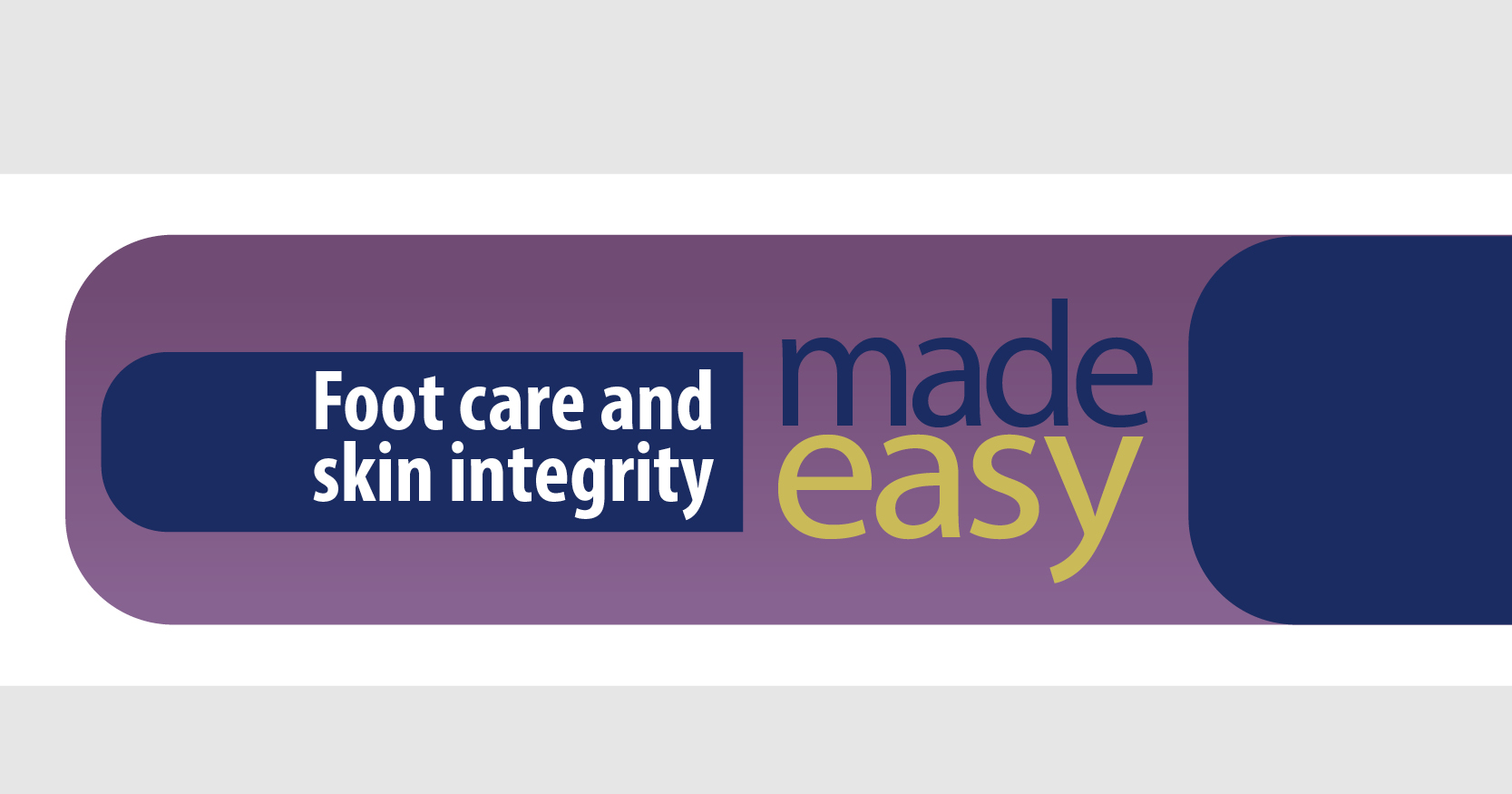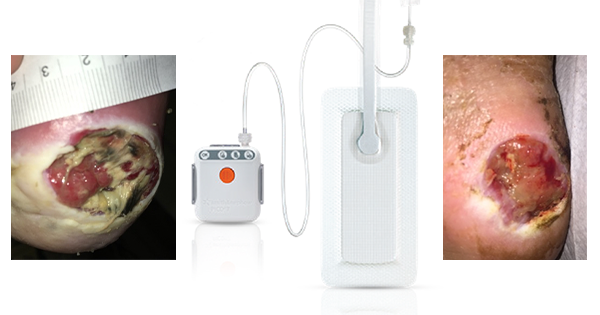The skin is the largest organ in the body and performs several functions and influences multiple systems in the body. Some of the functions of the skin include protection from external trauma, ultraviolet (UV) light, toxins and bacteria, thermoregulation, metabolism of vitamin D, sensation, excretory functions, and non-verbal communication (Butcher and White, 2005; Timmons, 2006).
Part of the protective mechanism of the skin is to provide a barrier to the outside world, to prevent the invasion of bacteria, viruses, environmental and chemical irritants, which can damage the skin and cause breakdown (Wickett and Visscher, 2006). One of the ways in which the skin does this, is by creating an “acid mantle”. This is a hydro lipid layer of fatty acids and other secretions, that create a slightly acidic surface of the stratum corneum. The acid mantle has a role to play in preventing colonisation of bacteria (Wickett and Visscher, 2006). Maintenance of skin integrity and the preservation of skin barrier function is important to enable the skin to perform its full protective role and should be a fundamental part of nursing care. Without it, patients can develop complex problems, such as pressure ulceration, moisture-associated skin damage (MASD), skin tears and infections.
There are two important ways to ensure that we protect the acid mantle of the skin. Firstly, to keep the skin healthy, an acid skin pH (4–4.5) is required to keep the resident bacterial flora attached to the skin (Lambers et al, 2006). It is important to use products with the correct pH when cleansing the skin to maintain this balance. The recommended pH of the cleansing agent should be between 4.0 and 6.8 (Lichterfeld-Kottner et al, 2020). Soaps and shower gels are often alkaline, and their frequent use can affect the acid mantle, compromising the skin barrier.
Secondly, prolonged exposure to moisture should be avoided. When the skin becomes overly wet, its protective barrier function is disrupted, and it becomes much more susceptible to damage. As such, skin barrier products have been developed to protect the skin from bodily moisture (Coutts et al, 2001).
What is incontinence-associated dermatitis?
MASD caused by urine or faeces is described as incontinence-associated dermatitis (IAD). IAD is a type of irritant contact dermatitis found in patients with faecal and/or urinary incontinence (Black et al, 2011). With incontinence, water from urine and/or faeces is pulled into and held in the cells. This overhydration causes the cells to swell and disrupts the structure of the stratum corneum and leads to visible changes in the skin. As a result of this excessive hydration (Beeckman et al, 2015):
- Irritants may penetrate the stratum corneum more easily to exacerbate inflammation
- The epidermis is also more prone to injury from friction caused by contact with clothing, incontinence pads or bed linen
- Exposure to urine and/or faeces causes the skin to become more alkaline. This skin bacteria convert the substance urea, found in urine, to ammonia which is alkaline. The increase in skin pH allows micro-organisms to thrive and increase the risk of skin infection.
Gray et al (2012) defined IAD as erythema and oedema of the skin surface, which may be accompanied by bullae with serous exudate, erosion, or secondary infection. In individuals with light skin, IAD appears initially as erythema, which can range from pink to red. In patients with darker skin tones, skin may be paler, darker, purple, dark red or yellow (Langemo et al, 2011). Once the IAD is classified as moderate to severe, which involves the breakdown of the epidermis, the skin will appear pink or red. This is because the melanocytes, which are the pigment-producing cells, live in the basal layer of the epidermis; therefore, underneath this layer, the tissue will appear pink or red. The affected area of IAD usually has poorly defined edges and may be patchy or continuous over large areas.
Incontinence
It is estimated that 14 million people are living with bladder problems, which is roughly the equivalent size of the over 60 population in the UK (Buckley and Lapitan, 2009). Urinary and faecal incontinence are conditions affecting one in three people living in residential care, and two in three nursing home residents (British Geriatrics Society, 2020). Inadequate management of incontinence can lead to escalating costs due to morbidity and unnecessary hospitalisation.
During episodes of incontinence, fluid from the urine and/or faeces is drawn into the stratum corneum (the outer most layer of the epidermis), causing the cells to swell as they become overhydrated. This can be visible as maceration. The disruption in structure, caused by the overhydration, increases the permeability of the stratum corneum to irritants, exacerbating inflammation, and increasing susceptibility of the skin to trauma from friction forces. When the skin is exposed to urine for more prolonged periods, bacteria convert the urea found in urine into ammonia—an alkaline substance, which in turn increases skin pH, rendering the skin more vulnerable to colonisation with bacteria and secondary infection. When the skin is exposed to faeces, the digestive enzymes present in faeces damage the acid mantle, exacerbating any existing damage to an overhydrated stratum corneum.
When the skin is exposed to a combination of urine and faeces, the effects of all these processes combine to significantly increase the risk of developing IAD, compared with exposure to either urine or faeces in isolation (Beeckman et al, 2015).
Assessment
Poor or inappropriate management of incontinence may also contribute to the development of IAD (Beeckman et al, 2015). Healthcare professionals should identify risk and severity levels of MASD before developing a care plan. Ultimately the goal of a clinician treating a patient with MASD is to manage the cause of the excess moisture (Cooper, 2011), to improve patient outcomes. However, while progress towards this goal is being achieved, it is crucial to follow a structured cleansing and protection routine.
Although risk assessment tools for IAD have been developed, these are not widely used in clinical practice. Pressure ulcer risk assessment tools, such as the Waterlow scale, were not designed for IAD, nor do they adequately predict the risk of IAD development. The development of a separate risk assessment tool for IAD is not recommended, although awareness of key risk factors for IAD is needed (Beeckman et al, 2015).
Risk factors include, but are not limited to:
- Type of incontinence (faecal or urine)
- Frequency of incontinence
- Skin health
- Decreased mobility
- Limited personal care
- Pain
- Impaired cognitive function
- Medications
- Critical illness.
One tool we do have available to us is, the Skin Moisture Alert Reporting Tool (S.M.A.R.T.), which is a visual guide endorsed by the National Institute for Health and Care Excellence (NICE), for any healthcare professional to use to identify, categorise and treat MASD. The S.M.A.R.T. tool identifies levels of skin damage as mild, moderate, or severe, with treatment, using the Medi Derma-S and Medi Derma-PRO Skin Protection range, to make product selection simple and easy to understand. Simplicity of categorisation, assessment and diagnosis combined with treatment paves the way for improved compliance among healthcare professionals.
Treatment
The foundation of care in preventing and managing severe MASD is a consistent and structured approach (Bradbury et al, 2017). A skincare regime that is implemented, will protect from skin breakdown, repair the barrier function, and restore the function of the skin. Choosing the correct barrier product is essential to maximise patient outcomes and importantly, it depends on the level of skin damage and the amount of moisture the skin is exposed to (Bradbury, 2016).
Cleansing
The skin of patients who are incontinent, will require more frequent and thorough cleansing to remove urine and/or faeces (the irritants that cause IAD). This should be done prior to the application of a skin protectant as part of a routine process to remove urine and faeces.
Traditionally, standard soap, water and a regular washcloth have been used to cleanse the skin; however, standard soap is alkaline and has been shown to change skin pH, which causes damage to the skin barrier function. It is therefore important to cleanse the skin thoroughly with a pH-correct cleanser, to protect the skin and prevent infection. It is also important to cleanse the skin gently to prevent any further damage to the skin.
Another important point to consider is that the application of water alone can impair skin barrier function, as evidenced by an increase in transepidermal water loss (TEWL) — considered to be a sensitive indicator of barrier health (Voegeli, 2012). Furthermore, infection control issues associated with the use of wash basins have been identified. In the case studies, we have used Medi Derma-PRO Foam & Spray Incontinence Cleanser, which is:
- Indicated for moderate to severely damaged skin.
- Free of alcohol, fragrance, latex, parabens and phthalates, to protect the pH balance of the skin, while gently cleansing
- A spray and a foam mode providing versatility, so that it can be applied via a cleansing cloth or directly to soiled skin
- A no-rinse formula, minimising the risk of rubbing the skin and causing potential friction damage
Protection
NICE (2014) recommend that patients assessed as being incontinent should use a form of barrier product to protect the skin. In the case studies, we have used Medi Derma-PRO Skin Protectant Ointment which is:
- Indicated for moderate to severe damage to the skin
- Free of alcohol, fragrance, parabens and phthalates, and is not made with natural rubber latex
- A non-sting formulation that enables it to be applied to damaged skin (Bradbury et al, 2017)
- Long-lasting, resilient, an provides a hydrophobic protective barrier function
- “Tacky” consistency ensuring that the ointment adheres well to moist skin and to the skin surrounding wounds (Bradbury et al, 2017)
- Able to be used underneath incontinence pads, as it does not block absorption (Dykes and Bradbury, 2016).
What is an ointment?
Ointments have a thicker consistency than creams and spread further across the skin. They tend to feel greasy or sticky. The difference between cream and ointment is variation in the water and oil ratio. While a cream has equal parts oil and water, ointments contain 80% oil. Ointments, due to the oil content, will sit on top of the skin and will not be absorbed as easily as a cream product; therefore, ointments offer greater protection as a barrier product against moisture loss, damage and the environment (Lachman and Liebermann, 2013).
Why use silicone?
Silicones are chemically obtained polymers (macromolecules) and are derived from silicon. The main characteristics of silicones, in general, are the following:
- They are hydrophobic: they are not related to water and cannot be dissolved in it
- They are photostable: they do not undergo changes on exposure to sunlight
- They are resistant to oxidation
- They are highly inert and are characterised by poor reactivity. In practice, they do not interact with other substances triggering chemical reactions.
Being hydrophobic substances, they create a protective hydro-repellent barrier on the skin and are able to protect it from external agents such as irritants. On one hand, this barrier defends the skin from external attacks, and on the other hand, it prevents the evaporation of water from the inside. In practice, the effect is passive hydration, aimed at retaining skin water as well as liquid paraffin or petroleum jelly. Since silicones are inert substances, when applied to the skin they do not create any type of reaction with the latter. The molecular structure of commonly used silicones makes it impossible for them to suffocate the skin. The unique molecular structure of silicones (larger molecules with wider spaces between each molecule) allows them to form a breathable barrier and explains why silicones rarely feel heavy or occlusive, although they offer protection against moisture loss.
Given below are a few case studies (courtesy of Sarah Waller) that show the benefits of using the Medi Derma-PRO Ointment and Cleanser range enabling the clinician to achieve enhanced patient outcomes.
Case series
Case Study 1
A 26-year-old male with a medical history of liver failure, hyperammonemia, hyponatremia, hepatic encephalopathy, coagulopathic, hypoglycaemia, and methemoglobinemia. The patient was acutely unwell and was awaiting a liver transplant. The patient had enteral feeding, the faeces were loose, and the skin was very excoriated and macerated (Figure 1A–B). The nurses carried out the MASD pathway, which was insufficient in this patient. Medi Derma-PRO had just arrived at the hospital for us to evaluate; therefore, we asked for consent to trial Medi Derma-PRO Skin Protectant Ointment and Medi Derma-PRO Foam & Spray Incontinence Cleanser. After 3 weeks of treatment, the patient and their family felt that there was good improvement and that the product healed and protected the skin (Figure 1C). While the patient is awaiting transplant and is continuing an enteral feed, the patient has a plan to manage the IAD and prevent the skin condition from becoming severe. This has drastically improved the patient’s quality of life due to the preventative plan being in place.
Case Study 2
A 49-year-old female, with rectal bleeding, who had been receiving chemotherapy for Burkitt’s lymphoma. The medications for her condition contributed to the breakdown of her skin and severe maceration (Figure 2A). The patient was being discharged and wanted to have a “normal” life, to be comfortable and free of pain. The patient consented to trialling the Medi Derma-PRO Skin Protectant Ointment and Medi Derma-PRO Foam & Spray Incontinence Cleanser following discharge. After 10 days of treatment, the patient’s skin had healed, and she was much more comfortable and pain-free, which had a huge impact on the patient’s quality of life (Figure 2B).
Case Study 3
A 64-year-old Lithuanian male was transferred from one of the local cottage hospitals having become very unwell. He had a significant medical history, including corpus callosum tumour, hydrocephalus, atrial fibrillation, mitral regurgitation, type 2 diabetes, renal cell carcinoma, and B cell lymphoma. As an inpatient at the cottage hospital, the patient developed IAD (Figure 3A). The staff had been using their MASD pathway and were about to step across to Medi Derma-PRO Ointment. As the tissue viability team at Addenbrookes Hospital had initiated a trial with Medi Derma-PRO, the patient’s treatment was commenced here. On reviewing the patient’s skin prior to discharge, he had no broken areas, the skin was intact, and some erythema was still present (Figure 3B–C). The patient’s superficial skin loss had been resolved. The IAD could now be classified as mild to moderate and treatment could be stepped down to a barrier cream to protect the skin.
Case Study 4
A 90-year-old female who was ‘off legs’ at home. She was incontinent and struggling to mobilise; therefore, she was sitting for long periods, often not going to the toilet and sitting in her urine. She had a medical history of cervical cancer, fluid overload and asthma. She was admitted to hospital for a surgical procedure: a Laparoscopic Right Hemicolectomy. Following the operation, the patient developed a pulmonary embolism, which restricted her mobility further (Figure 4A). Physiotherapists noted that she was scraping her bottom across the side of the bed which was causing friction. Postsurgery, the patient’s skin deteriorated, and the barrier cream she was using was not showing any improvements. It was therefore decided to use Medi Derma-PRO Skin Protectant Ointment and Medi Derma-PRO Foam & Spray Incontinence Cleanser. Although the patient still had some skin damage present upon discharge, this was due to friction on the skin when mobilising out of bed or her chair, which caused a slight skin tear. The severe IAD had been resolved, and treatment was stepped down to a barrier film, to protect the skin from further friction and skin tears (Figure 4B-C).
Discussion
IAD represents a significant health challenge worldwide and is a widely-recognised risk factor for pressure ulcer development. While the exact prevalence and incidence of IAD is unknown, all patients with incontinence are at risk of IAD. An individualised prevention plan should therefore be implemented to reduce the risk of both IAD and pressure ulcers (Beeckman et al, 2015).
This article highlights the need for prevention of severe IAD and how regular assessment of the skin and classification of IAD, as well as timely implementation of effective treatment, can protect and restore the patient’s skin. Choosing an appropriate product is important to help heal the skin and prevent further damage. Ointment is the product of choice for severe IAD, with broken or excoriated skin, because it will protect the injured area from the external environment and permit the skin to rejuvenate. It will also provide moisture to help heal the skin and prevent further transdermal moisture loss. In each of the cases shown, we were able to step down to a film product, which is more suitable for mild to moderate cases of IAD.
Conclusion
In conclusion, the staff found the use of Medi Derma-PRO Skin Protectant Ointment and Medi Derma-PRO Foam & Spray Incontinence Cleanser to be more effective than their current protocols for treating severe skin damage of all ages. The patients in these case studies felt more comfortable, had reduced pain, elevated moods, improved quality of life, quicker healing time, and possibly reduced admission time and nursing care.






